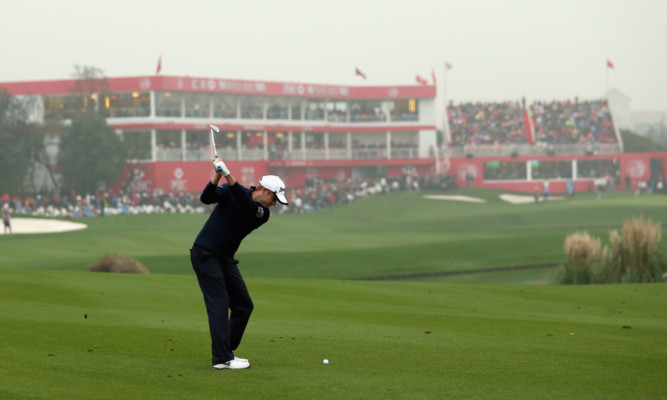Because his accent’s well tinged with Floridan citrus rather than North Kessock after 12 years in the US, you might be misled into thinking Inverness-born Russell Knox isn’t very Scottish.
But when speaking to him, it doesn’t take long to realise. Case in point was the 30-year-old’s press conference after winning the WGC HSBC Champions in Shanghai, and becoming the first Scot to win one of these meaty World Golf Championship events.
Knox credited his wife, Andrea, his late coach Mike Flemming, his caddie Bradley Whittle and even a secretary at the PGA Tour for crucial roles in bringing him to his £900,000-plus victory. Okay, he admitted after some pressing, he might have had a decent putting week for once, but actually he’s usually rubbish on the greens.
You can take the Scot out of Scotland but you can’t take the self-effacing attitude out of the Scot, clearly.
What Russell doesn’t so readily admit is that he’s a highly determined and focused individual with a good deal of talent and a great deal of enthusiasm for making himself better.
Now at 31st in the world, with a free pass into all the elite events for 2016 including a Masters debut, plus a head start in the Ryder Cup race if he chooses to join the European Tour, Russell has a lot to be boastful about.
Naturally his victory asks plenty questions about the Scottish development system. Both Russell and the last Scots winner on the PGA Tour, Martin Laird, got very little assistance from the programmes of the Scottish Golf Union on the way to success.
Russell himself, as you’d expect, advised up and coming Scots players to follow him and enrol in the US college system.
There’s no question that it worked for him and Laird, who went to Colorado State, an unfashionable college like Russell’s Jacksonville.
But there are scores of Scots who have done this. Some use the US golf scholarships simply to get themselves good degrees with the golf itself as just a side interest.
Many find a good base in sunnier climes and become much better players, but choose to return home after their studies are complete.
A good many don’t settle at all and come back after a couple of years or less.
Very few follow the actual path of Laird and Knox, which is to graduate from college, work their way up through the plethora of mini tours thoughout America and then make it to the PGA Tour from the Web.com Tour.
It can clearly be done – a talented young player from Edinburgh, James Ross, is trying the same thing at the moment – but it takes a special kind of attitude and it’s certainly not cheap.
All in all, it can be a great way to becoming an elite player, but it’s a tough road and not for everyone.
Last week the Challenge Tour Grand Final in Oman saw 15 players graduate to the European Tour next season. Two of them, Andrew McArthur and Jamie McLeary, are Scots.
Both are in their mid-30s, both were Scottish champions in their amateur days. Both also did a full four years at a US college.
For both Andrew and Jamie, it won’t be the first time around on the European Tour either. But they’re there for 2016, and there’s an opportunity for them to forge a decent tour career based on the playing rights they get from Challenge Tour qualification.
Meanwhile yesterday, the remaining Scots within the European Tour Q School were battling to get through Stage 2 and reach the final stage at PGA Catalunya which begins on Saturday.
This, as we’ve discussed before in T2G, raising the ire of some people in the process, is the proverbial last-chance saloon.
There are 280 players at the four venues for Stage 2, and if they were successful in getting through they’ll have a six-round slog for just 25 cards which are not really “proper” Tour cards at all, allowing them entry into less than half of the 2016 European Tour schedule.
It’s illuminating to look down the lists at Stage 2 – remember, those who narrowly missed out on the European Tour or Challenge Tour don’t come in until Final Stage – and see those playing.
There’s Ryder Cup players, former Tour winners, any amount of former Amateur champions – including our own Bradley Neil – and a whole host of quality Walker Cup and amateur international caps. I can’t even count the number of players somebody told me in the last 20 years were “sure things” to make it.
The odds of success at this end of the game seem almost astronomical, but no more so than Russell Knox’s route. Some, hopefully Bradley or David Law or maybe another talented Scot, will make it to the big time this way.
The truth is there is no definitive way to make a success of pro golf. Scottish golf might take get some flak for not recognising Knox or Laird’s full potential but I think this misses the point.
Knox proves, surely conclusively, that it’s not the system but the individual that matters. There’s many ways to be successful in pro golf and many more to fail; because it’s finding one that works for YOU that’s the hardest thing.
